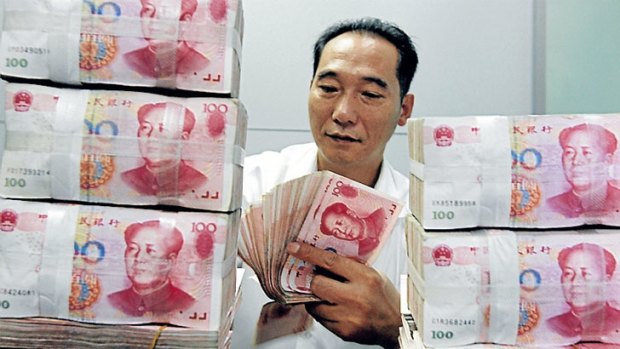By Matthew Kidman
RICHARD Leupen's comment last week that the resources boom was past its peak was about 16 months too late for equity investors. I'm not sure what data the UGL boss has been looking at but the materials sector on the Australian Securities Exchange hit a peak in April 2011 and has declined 37 per cent since. Global investors saw the writing on the wall well before many Australian companies and started to switch out of major mining companies into other sectors. The question for stockmarket investors today is whether the bottom of the resources crash has arrived and should we wade back into mining stocks? Since the beginning of June the sector has attempted to climb off the floor but the rally lacks conviction.
The only genuine driver of commodity prices, especially bulk and base metals, is the Chinese economy. For resource investors the longer-term prosperity of the sector will depend heavily on the upcoming elections of the Communist Party that will determine the direction of the Middle Kingdom over the next decade. To understand this more fully we need to look back on recent history.

'A reformist style of government may well temper top-line growth targets in a bid to chase a sufficient return on capital.'
As is well documented, the Chinese government injected a stunning $US570 billion of funds into its economy after the 2008 global financial crisis. This triggered a tidal wave of capital investment, with residential apartments popping up quicker than mushrooms following a summer rainstorm. Commodity prices spiked and the shares in Australian mining companies went on a stampeding bull run. But the housing bubble began to deflate in early 2011, providing the catalysts for equity investors to desert the mining industry. At the time many Australian companies, including BHP, Fortescue Metals and Rio Tinto, were finalising plans to expand their output. The end of the housing boom in China, though, was not secretive information and anyone looking at the Australian Reserve Bank website could have been on top of the cycle.
Global investors were acutely aware that high-rise buildings are resources intense and require about three times the amount of steel compared with other construction projects. This was a signal to sell a range of companies, particularly those producing metallurgical coal and iron ore.
The halt to the residential boom was brought about by stricter lending standards imposed on the Chinese banks by the government in Beijing. Many highly leveraged private building companies were caught out by the move, resulting in numerous collapses and widespread economic stress. Applying the lending brakes also had the desired impact of slowing the overall Chinese economy down through 2011 into 2012.
Move forward to August 2012 and the consensus is that the landing in the Chinese economy has been on a bed of rock rather than a comfortable mattress. Beijing has recently made several tepid attempts to again stimulate activity, but the private companies singed by the credit crunch of 2011 and early 2012 are not biting. Instead, the highly inefficient state-owned enterprises (SOE) have been forced to fill the void. The end result has been a major leg down in productivity. One businessman commented to me recently that he believed China's efficiency levels had reversed by about five years. As a consequence, the economic growth numbers are not picking up as hoped, but are actually still slipping, a situation worsened by the rapid decline in export markets, especially by a moribund Europe.
Investors have been eagerly waiting for the Chinese government to loosen its considerable purse strings and blast the economy back to the good old days. This has yet to eventuate and is increasingly unlikely to happen. The Communist Party is due to usher in new leadership in Beijing sometime before 2013 and anything major regarding a sizeable monetary injection is unlikely to take place before then.
So what does that mean for Australia's mining stocks? The answer really lies in what the new regime in Beijing decides to do next year. A more Western style of economic implementation may well take hold. Under the leadership of Hu Jintao, China has been run to achieve stated five-year growth rates, with a heavy concentration of top-line growth. This has resulted in excess capacity in many industries including residential construction, and destroyed any concept of adequate returns on capital.
A reformist style of government may well temper top-line growth targets in a bid to chase a sufficient return on capital.
This would mean a redirection of funds away from some industries into others that could increase productivity levels, such as airports, hospitals and more efficient power plants.
China consumes about 30 per cent more energy per unit of output than Western countries and this needs to be attended to. All this suggests that China may still grow at healthy rates but the desire to consume all elements dug up from the ground in Western Australia and Queensland may not be as strong.
This does not mean a collapse in mining company stock prices. For the most part that has already occurred. It may simply mean that demand for various commodities will moderate for some time to come and the lowest-cost producers will be the major winners. In other words, the boom that kicked off in 2003 and concluded in April 2011 will not be repeated in terms of scale and share-price performance. However, investors who are willing to pick carefully, will find tremendous opportunities without the fear of the overall mining sector collapsing as has been the case for the last 16 months. This means that things should improve on the disasters of recent times.
matthewjkidman@gmail.com